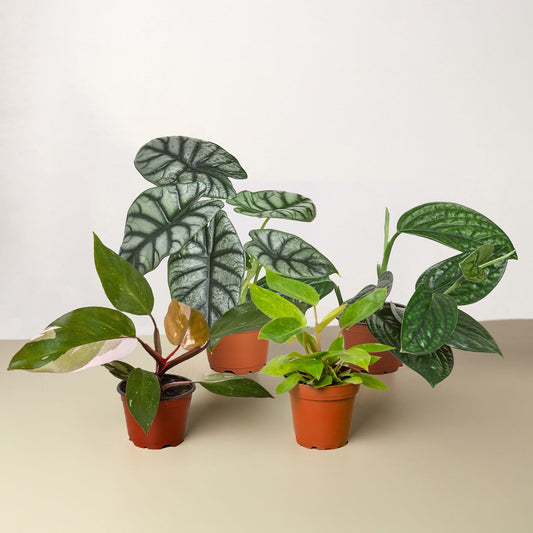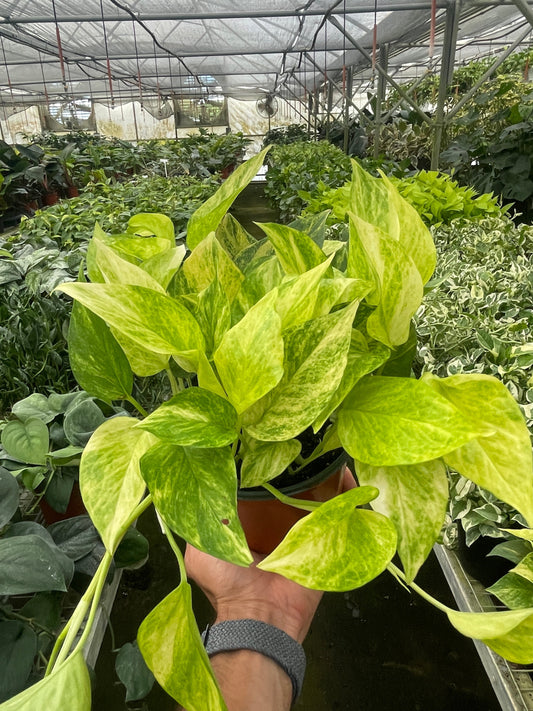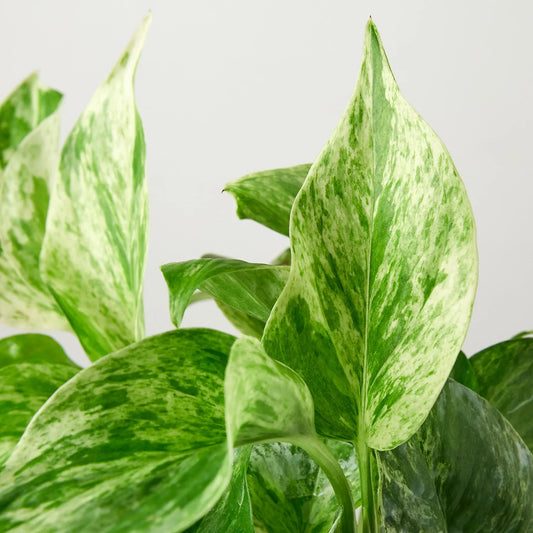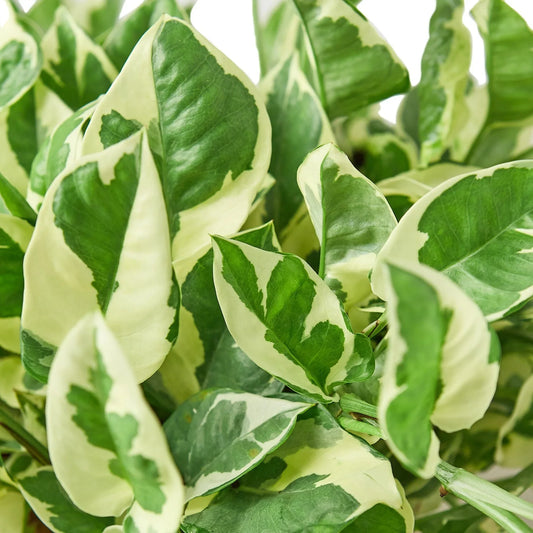Pygmy Date Palm Heat Tolerance: What Temperature Is Too Hot?
Cafe Planta Team
When it comes to houseplants, the Pygmy Date Palm is like the steadfast friend you can always count on. Known for its elegant, feathery leaves and compact size, this palm adds a touch of tropical charm to any indoor or outdoor space. But with its exotic origins comes a couple of questions, especially about its heat tolerance. Just how much heat can a Pygmy Date Palm handle?
In this article, we’ll explore everything you need to know about the heat tolerance of the Pygmy Date Palm. From understanding its natural habitat to practical tips on how to keep it cool during sizzling summer days, we've got you covered. Let's dive into what makes this plant tick in warmer climates and how you can help it thrive.
Getting to Know the Pygmy Date Palm
The Pygmy Date Palm, or Phoenix roebelenii, is a popular choice among plant lovers for a good reason. Native to the subtropical regions of Southeast Asia, this palm is accustomed to warm, humid conditions. It usually grows to about 6-12 feet when outdoors, but stays more compact when kept indoors, which makes it a perfect fit for your living room or patio. With its graceful arching leaves, it can easily become a centerpiece in your plant collection.
However, its natural habitat doesn’t mean it’s invincible to heat. While the Pygmy Date Palm enjoys warmth, there is a fine line between warm and too hot. Understanding this balance is key to ensuring your palm stays healthy and vibrant.
Natural Habitat and Climate Preferences
To grasp the heat tolerance of the Pygmy Date Palm, let’s think about where it comes from. This palm thrives in the undergrowth of tropical forests where it enjoys warm, humid air and dappled sunlight. These conditions offer clues about its heat preferences.
In its natural environment, temperatures typically range from 60°F to 85°F. The humidity is high, and the sun is filtered through the canopy. The plant isn’t exposed to direct, harsh sunlight all the time, which means it's not used to extreme dry heat. While it’s used to warmth, it doesn't mean it can handle the scorching midday sun directly.
How Hot is Too Hot?
So, what temperature is too hot for the Pygmy Date Palm? Generally, temperatures above 100°F can start to stress the plant, especially if combined with low humidity. In such conditions, the leaves can start to brown at the tips, and the overall health of the palm can decline.
It’s not just about the temperature, though. Humidity plays a huge role. In dry heat, even temperatures as low as 85°F can be too much if the air is parched. The leaves might lose moisture faster than the plant can replace it, leading to dehydration and browning.
Signs of Heat Stress in Your Palm
Knowing the signs of heat stress can save your Pygmy Date Palm from long-term damage. Here are some symptoms to watch out for:
- Browning Leaves: If the tips of the leaves start to turn brown, it could be a sign that the plant is losing moisture too quickly.
- Wilting: This is a clear indicator that your plant isn’t happy with the current conditions.
- Yellowing Leaves: While this can be caused by several factors, high heat can be a culprit if it coincides with a heatwave.
- Dry Soil: Check the soil moisture. If the soil is bone dry, it’s time for a good soak.
If you notice these signs, it's time to take action to cool things down for your palm.
Cooling Down Your Palm
Now that we know high heat can stress your palm, let’s talk about how to mitigate those effects. Here are some strategies you can use to keep your Pygmy Date Palm cool:
- Provide Shade: Move your palm to a shadier spot during the hottest part of the day. If it’s outdoors, consider using a shade cloth.
- Increase Humidity: Use a humidifier or mist the leaves regularly to mimic the palm’s natural humid environment.
- Water Wisely: Ensure the soil stays consistently moist, but not waterlogged. Water your palm early in the morning or late in the afternoon to reduce evaporation.
- Mulch: Add a layer of mulch around the base of your plant to help retain soil moisture.
These simple steps can make a big difference in helping your palm weather the heat.
Indoor Care: The Air Conditioning Factor
If your Pygmy Date Palm is indoors, you might think it’s protected from high heat. However, air conditioning can create a different set of challenges. Air conditioning tends to dry out the air, which isn’t ideal for a plant that loves humidity.
Here’s how you can help your indoor palm:
- Positioning: Keep it away from direct air vents. Cold air can cause temperature fluctuations and dry out the plant.
- Humidity: Consider using a pebble tray with water underneath your pot to increase the humidity around your plant.
- Regular Misting: A quick misting can help keep the leaves hydrated.
Keep an eye on your palm’s condition, and adjust your care routine as needed to accommodate the indoor climate.
Outdoor Care: Dealing with Direct Sunlight
If your Pygmy Date Palm lives outside, it’s more exposed to direct sunlight and temperature fluctuations. While these palms can handle some sun, especially morning sun, the intense afternoon rays can be too much.
Here’s how to protect your outdoor palm:
- Strategic Placement: Plant your palm in a spot where it gets morning sun but is shaded during the hottest part of the day.
- Companion Planting: Use taller plants to provide natural shade.
- Watering Routine: Adjust your watering schedule during heatwaves. More frequent watering might be necessary to keep the soil from drying out.
With a bit of planning, you can create an outdoor environment that suits your palm perfectly.
Long-Term Heat Management
Long-term heat management is about developing habits that keep your Pygmy Date Palm healthy all year round. Here are some practices to consider:
- Seasonal Adjustments: As seasons change, adjust your care routine to match temperature and humidity changes.
- Soil Quality: Ensure your palm is planted in well-draining soil to prevent root rot, especially if you need to water more frequently during hot spells.
- Fertilization: A healthy, well-nourished plant is more resilient to stress. Use a balanced palm fertilizer during the growing season.
By incorporating these practices, you’ll help your palm handle heat more effectively over time.
Common Mistakes to Avoid
Even seasoned plant parents can make mistakes. Here are a few common pitfalls to avoid when dealing with heat:
- Overwatering: While it's important to keep the soil moist, too much water can lead to root rot.
- Ignoring Humidity: Remember, heat stress isn’t just about temperature. Low humidity can be just as damaging.
- Neglecting Shade: If your palm is exposed to harsh midday sun, it needs protection.
By steering clear of these missteps, you can keep your palm happy and healthy.
Final Thoughts
The Pygmy Date Palm is a wonderful addition to any plant collection, but it does require some care when temperatures rise. By understanding its natural climate preferences and making a few adjustments, you can ensure it thrives even in the heat.
At Cafe Planta, we're here to support your plant journey. Whether you have questions about plant care or need to find the perfect accessory for your home, feel free to email us or reach out on Instagram. We believe in the power of plants to connect and inspire us all. Let's grow together!



















